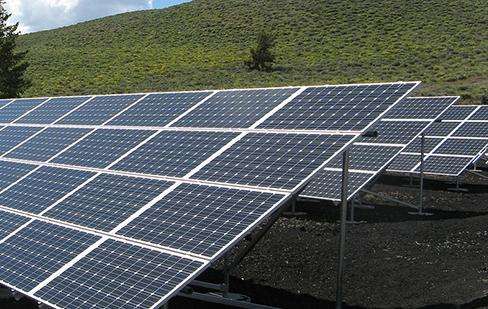1. Skyworth will all transition to operating leases after September 21, 2021, and the leasing model is closed as of today.
The operating lease is fully funded by Party B. The bottom line is that the “chicken” is raised by you and you will get a share of the eggs.
Financing is gone, but I still have to say that leasing is like a loan but it's not a loan. In fact, the “hen” is rented to you for 500 yuan per month. No matter how much money the "chicken" earns this month, you will repay 500 yuan every month. The reason this is different from a loan is that in the event of default, this is at most considered a rental dispute, and it is easy to resolve as long as the equipment does not is not damaged. Some buildings nearby block the way, some trees have grown, there is less sunlight in winter, etc., etc., etc., etc., etc., etc., all this will cause the power plant to not work.will not ion. be able to generate income. At most it will be deducted from the next period, I don't think that's certain. This is basically not possible without damaging the hardware. The customer may be held liable, but so will the customer's revenue. reduce. Loans are also different. What you get is money, and you have to pay it back regularly, regardless of your situation. Margin financing and securities lending have average risk and return. The risk is that income can vary from high to low. Typically, they represent around 30-40% of the power plant's total revenue.
Operational leasing means it has nothing to do with you, just let you raise it here, and don't sell the "hen" or anything. If the eggs are laid, we will share the rent even if you pay the rent. Even if the eggs are not laid, we will give you a minimumguaranteed XX yuan every month. Leasing is low risk and low return. and you usually get 10-16% of the power plant's total revenue.
Author: Muggle Lover
Link: https://www.zhihu.com/question/474693288/answer/2299253456
Source: Zhihu< /p >
Copyright belongs to the author. For commercial reprinting, please contact the author for permission. For a non-commercial reprint, please indicate the source.
How is photovoltaic power generation cost-effective
Clean coal + matching stove heating
Compared to other methods clean energy heating The cost is relatively low, the supply guarantee is relatively stable, clean coal is easy to burn, has high calorific value, has a long fire sealing time, is resistant to combustion and saves energy. coal, has low consumption, does not needn adding coal frequently, saves time and effort, is easier to use and greatly reduces coal consumption, is more economical and energy-saving. Clean coal combustion has low sulfur, low ash, low volatility and more complete combustion, which can effectively reduce emissions of pollutants such as carbon monoxide, sulfur dioxide and nitrogen oxides . Less smoke and dust are produced after combustion, which can effectively reduce air pollution and thus improve the living environment. Coal combustion is essentially direct discharge at low altitudes, and the combustion products are easily inhaled by the human body. The sulfur content of clean coal is less than 0.5%, it burns without black smoke and odor, produces less harmful substances, and has very little harm to the human body, which can effectively reduce carbon pollution.t the phenomenon of gas poisoning in winter.
Distributed photovoltaic power generation can generate profits through the difference in electricity bills.
For example, if you invest in building a 5MW photovoltaic power plant on the roof of your own company in Beijing, the construction investment will be huge. It is about 35 million yuan and can produce 6 million kilowatt hours of electricity each year. You sell 50% of the electricity to your own company (for your own use), at a price of 0.8 yuan per kilowatt hour, and the rest. is sold to the state grid (the remaining electricity is connected to the grid). A kilowatt hour of electricity costs 0.39 yuan, the state will give you a subsidy of 0.42 per kilowatt hour (20 years), and Beijing will give you a subsidy. of 0.3 per kilowatt hour (5 years). Then you equate to 3 million kilowatt hours of electricity, sold for 5 years.ur 1.52 yuan, sold for 15 years for 1.22 yuan, and you still have 3 million kilowatt hours of electricity, sold for 5 years for 1.11 yuan, sold for 20 years for 0.81 yuan.
Translation In Mandarin, in the first five years, your annual income from electricity sales is 7.89 million yuan/year, and in the next 15 years, your annual income from electricity sales electricity is 6.09 million. yuan/year.
Of course, we must also consider the annual attenuation of 0.05% of the solar panels, the linear depreciation over 10 years of the equipment, the annual inflation of 3%, the tax on income from the 10th year, and replacement of the inverter in about 10 years, various insurance investments, money for window cleaning and value added tax halved and much more other factors.
In summary, the IRR of any equity investment in a photovoltaic plant mentionedin the example above for 20 years is around 16% to 18%.
If you rent someone else's roof, you usually have to pay an additional fee. 'around 250,000-500,000 per year for a 5MW roof, so your IRR will probably drop to 14%-15%
Considering some people will I use the EPC price I gave to embarrass my peers, so I reserved some space (there should be applause for my peers. At the same time, I also ask the owners to note that the scale of the photovoltaic project will directly affect). the cost, i.e. a 500k project and a 5MW project and a 20MW project have completely different costs!
Link: https://www.zhihu.com/question/46411593/answer/101193418
Source: Zhihu














